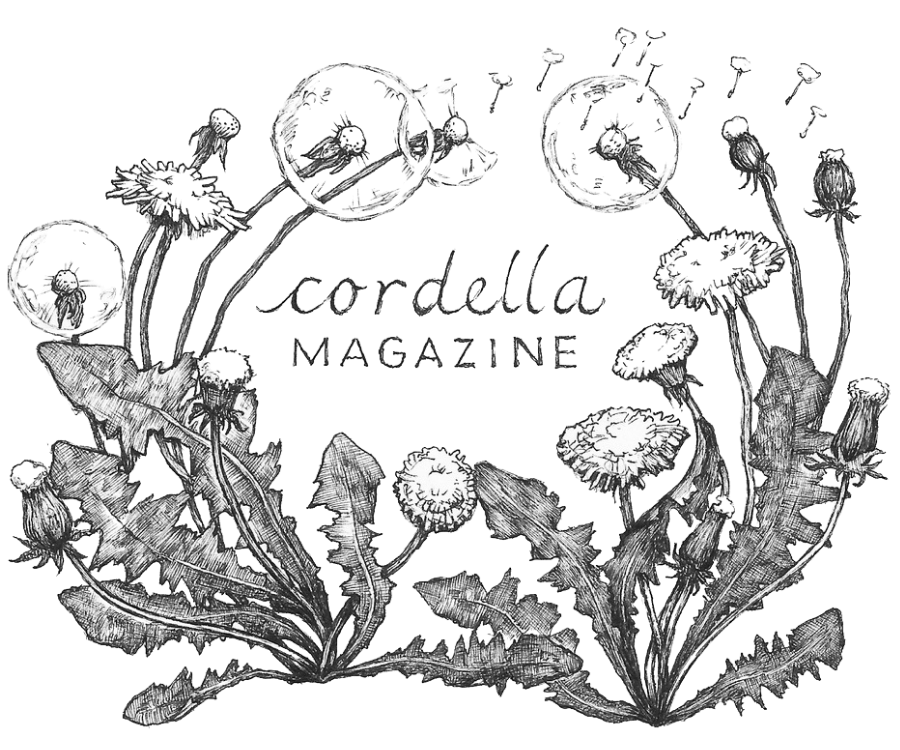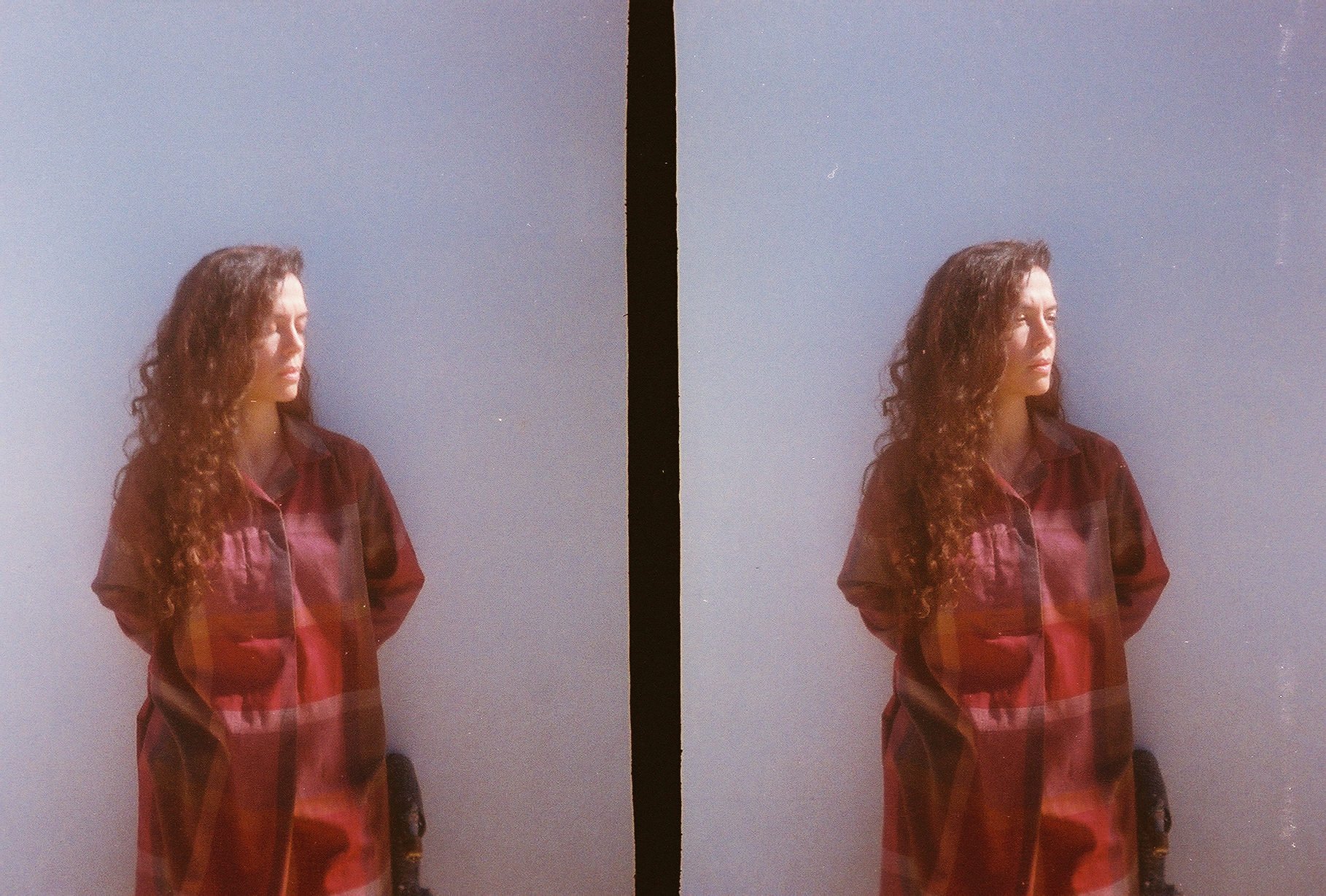Reconstellated
An Interview with Karima Walker
“Reconstellating the ground beneath our feet. Reconstellate the stars inside of me.”
Through her ethereal sonic landscapes, interdisciplinary artist Karima Walker explores liminal spaces, both within and without, and reflects on what it means to be a human being walking the earth. Weaving folk with ambient and experimental, Walker creates shimmering, intimate music that gently nudges the listener towards transformation. It was a delight to interview Karima Walker for our 18th issue.
Image by Ariel Crocker
Image by Holly Hall
Cordella Press: Tell us about how you create your ambient textures. What tools do you use? What techniques? Do sound design elements emerge in relationship to chord structures or lyrical themes, or does your work with ambient sounds exist separately from that?
Karima Walker: I often use my voice as a starting point for the textures I create, that and looping, usually tied into breath. Always a looper, often a 4 track, Ableton. Sometimes I’ll start with an acoustic instrument…I try to work along a line of precision/nudging things till it’s all just so, and allowing for the artifacts of different media/methods to present themselves. Depending on the project, I’ve sat with loops and textures for a while to see if they are a foundation for something lyrical or if they are supposed to exist on their own—I don’t always know right away.
CP: What is an example of an album or artist that has impacted you from the world of folk music? What is an example of an ambient/electronic album or artist that has impacted you?
KW: I’ve been listening to and singing along to Allegra Krieger’s album, I Keep My Feet on the Fragile Plane, nonstop this fall. It leaves me breathless literally. I love it. I usually gravitate toward more spare negative space, but it’s magic that she made something so rich and dense and unrelenting but still somehow making room to savor the imagery and narrative world she’s building.
It’s not a recent release, but I’ve been listening to Laurie Spiegel’s The Expanding Universe. I’m in school right now, and I listen to her album on repeat. It’s sometimes all I can listen to and not get distracted. The frequencies and pulses…they’re pushing buttons on my brain.
CP: How did the door open for you to begin experimenting with non-traditional sound design? What encouraged you to pursue it? What about ambient soundscapes compels you to continue working with it?
KW: It came from my dissatisfaction with what I had been doing before, and a curiosity to rethink and deconstruct my role as a performer in ways that could be subtle. It also came from friends helping me figure out what gear I needed.
I think my relationship to soundscapes is rooted in actual physical places. We’re pretty visually reliant culturally, but field recording, or sounds that imply or directly represent place…they have a way of accessing memory and orientation in a way that is really fascinating to me. All while being temporal and ephemeral. And so when you start to manipulate or play with those sounds, however disembodied or representational they might be, I really enjoy that.
Image by Holly Hall
CP: I understand that you grew up in Arizona, but your maternal heritage is Tunisian. Lyrically, your music references the geography around Tucson and the Sonoran desert—does Tunisia act as a reference for you musically?
KW: Not at this point in time, or not in a way that draws literally and directly from that heritage (publicly). I am part of a large Arab diaspora. Diaspora, third-spaces, liminal spaces, nepantla…So many people and artists have framed and integrated their grief, celebration, dispossession, assimilation, migration narratives in their work. I think some of the work I am up to in school right now is sitting confidently in that positionality with dignity.
CP: I understand that your mother had worked as a singer, performing popular music and songs from Tunisia–and that she had been absent from your life until you were a teenager. Does her identity play a role in your creative process, either positive or negative?
KW: She sang songs from all across the Arab world. I have immense respect for the way she was able to do her work, undocumented in France, while supporting family in Tunis. It was an incredibly difficult path she was on, to pursue a dream like that, while shouldering the wellbeing of family members…I think when she passed last year, something in me woke up. That I have work to do too.
CP: The title track from your 2021 album, Waking the Dreaming Body, features lyrics that personify and feminize the earth and suggest the narrator's willingness to die within her. How did you arrive at these lyrics?
KW: I was in a beautiful place, outside, one of my favorite places, and thinking about ecological devastation. It was so beautiful, I could just die there…and the thing is, we will just die here. Something so beautiful it kills you. What a strange metaphor. The pain of that beauty and the reality of us earthbound people felt very equally present in that moment.
Image by Holly Hall
CP: As an artist working with acoustic and vocal performance alongside electronic, synthesized, and/or loop-based production, how would you characterize the experience of creating in these two modes? What leads you to use your voice and/or guitar on a particular song versus an electronic approach? Are these two modes associated with distinct emotional gestures?
KW: Sometimes they feel very separate. I’ve sometimes fought to keep them integrated, other times I let them meander on their own. They are both liberating in their own ways. I don’t know how to answer part of your question because I am not always sure what the best way forward is for a song. Playing the guitar and singing is deeply comforting to me. The physically resonating body accompanying your own. It might be a different kind of emotional reservoir than when I’m slowly turning a knob for five minutes. But you know, something strange happens when I sit there and slowly turn the knob, a different kind of not-knowing. The world of gear is funny though, the ego of all the devices, doing something cool with them that could impress people. And I have to constantly remind myself that if all I do is turn a knob, that’s ok.
CP: You are an interdisciplinary artist, working in various mediums and modalities, and you've recently begun an MFA program. Are you looking to expand your practice in a particular way?
KW: I am—into material fluencies like weaving, and ceramics but also to deepen the ways I’ve been thinking about land, sound, the body, performance. I’m in the first of three years, so I’m going broad for a moment and trying to sample everything.
CP: Is there a musical or production technique that you are interested in learning and applying to your music? An instrument you'd like to pick up or some electronic gear you'd like to integrate with your setup?
KW: I’d love to bring my body back into the mix! And maybe joy…and with gear…I think it might be time to just use a computer, to learn a little teeny bit of code? Sometimes we will do anything to avoid performing with a computer. What would happen if I consolidated what all that gear is doing…I don’t know!
Image by Holly Hall
CP: The song “earth into air” from your demos album features evolving ambient textures, indications of rhythmic structure, and a sharp transition between soundscapes. Could you describe how you created this work? What tools did you use, how did you organize it, what led you to these sounds?
KW: I used many many layers of bowed lap dulcimer, ping-ponging vocals, glockenspiel, field recordings of night creatures, wind whistling through a door and a minilogue. I was thinking of a horizon as a rupture, as an event or a score. I wanted the tension of strings, density and sublimity butted up against the levity, ephemerality of the sky.
CP: Your music, both sonically and lyrically, seems to indicate a place between two states of being—or maybe moving fluidly between two states of being/dualities such as structured/unstructured, day/night, sky/earth, asleep/awake. Does this ring true? If so, how would you characterize the desire to navigate this liminal place?
KW: Yes it does. It comes from so much of my life, moving into and out of religion, family systems, experiences of gender and queerness, being part of a diaspora. So much of my lived experience has encompassed the indefinite, lack of closure, moving forward in spite of so much being unknown. At the same time, so much of the world demands of us to be clear, definite, simple, immediately apprehended and categorized and legible to systems that are violent and harmful. I fall into these demands, despite myself but I think the work allows me to maintain complexity, to be curious, to suspend the rules for a moment.
Karima made a mixtape for our readers with some of her favorite tracks. Listen on Spotify.
Karima Walker
Karima Walker is a singer, songwriter, and sound designer based in Tucson, Arizona. Find her work at karimawalker.com.








